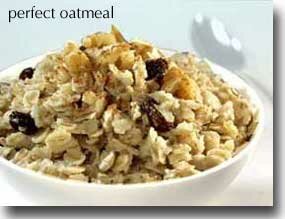We discovered Mjadarah when living close to
Neomonde, a Lebanese deli on the short list of what I miss most about Raleigh, NC. I lived there for over 20 years, lots of memories, but I miss Neomonde. Sigh.
So I tried to recreate this most wonderful of their dishes ... and it turns out that it isn't that hard. Lentils, rice, caramelized onions. My version is different, probably not traditional (typical recipes call for more rice than lentils) but often, it is every bit as good, maybe better. This tastes like I always wished home would taste. Comfort food.
Ingredients:
4-6 large white onions (or yellow)
no garlic, that's right no garlic
1 cup brown rice (I use especially like the asian mixed rice shown below
1 cup green lentils (or brown, if you can't find green)
1 cinnamon stick
roasted cumin seeds
veggie bouillon (optional)
black pepper
First quarter the onions and slice crosswise into thin strips. Saute in a generous amount of olive oil unless you are on a diet. Stir cook for at least 30 minutes until the onion is caramelized to a nice dark brown. The olive oil is very tasty is I think more is better than less. If you are on a diet, this will be so delicious that you will not need the extra oil.
Feel free to stir the onions as often as you like. Sometimes I cover them, sometimes not. They smell wonderful.
While the onions are cooking, rinse the rice. I always rinse rice 3 times so the grains separate nicely when cooked. Add water to cover and simmer. Unfortunately, I never measure the water. I cover the rice in enough water to have a little over 0.5 inches above the rice. I measure against a known point on my finger from the bottom of the pot I cook the rice in. Not helpful, I know. Cover the pot and turn the rice on high until it starts boiling, then lower to a simmer.
Stir the onions.
While the rice and onions are cooking, pick through the lentils, discarding the bad ones, keeping our eye peeled for the occasional pebble. I've only seen a couple over several years, but you don't want anyone to accidentally crunch down on one. Wash the lentils, cover and simmer in 2.5 cups of water with the cinnamon stick.
Stir the onions.
Occasionally test the lentils and turn off when the lentils are soft enough to eat, but before they get mushy (about 30 minutes). Some lentils get mushy quickly, but the green ones are not so delicate. Towards the end of cooking, optionally add bouillon. Bouillon is suggested, but totally optional.This dish has plenty of flavor without.
Stir the onions and add generous grind of roasted cumin seeds.
The mixed brown rice I use takes about 30 min to cook, but most brown rice takes 45 minutes. When the rice is tender and has absorbed most of the water turn it off.
Stir the onions.
When everything is done, mix together in the cast iron pan with the onions. Add a generous grind of black pepper. If you didn't use bouillon, add salt to taste. Let it rest for a while if you aren't hungry. I'm usually hungry, or I wouldn't have started cooking. It will be even better tomorrow.
Feel free to improvise. I've added mushrooms & ginger, fire roasted tomatoes, more or less rice & lentils, different spices. I've cooked it all in one dish when feeling lazy (caramelize onions then add rice, lentils & water & cook). It is always tasty.
If this is for company, make LOTS of onions and only mix in half. Use the rest as a decorative topping. This is traditional, but it seems to miss the point of distribution the wonderful onions through out the dish.



